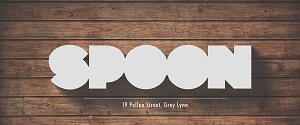 In February cinematographers Dave Garbett and John Cavill related their experiences on the 2015 Ash vs Evil Dead shoot to an audience of NZCS members and guests. The event was held at Spoon, while they were prepping their 2016 shoot.
In February cinematographers Dave Garbett and John Cavill related their experiences on the 2015 Ash vs Evil Dead shoot to an audience of NZCS members and guests. The event was held at Spoon, while they were prepping their 2016 shoot.


To kick things off NZCS members and new faces were treated to an episode of Ash vs Evil Dead, which set the tone of the evening and stimulated lots of questions for Garbett and Cavill.
In 2015 Dave Garbett stepped into the franchise and shot the first episode of the 2015 series, establishing the look and feel for the series. He says it is a stylised look, harking back to the B grade movie style of the original 1981 cabin-in-the-woods horror.
“It captured peoples imagination,” says Garbett. “We don’t want it to be B-grade by doing a bad job of it, but by pushing it into a stylised arena. It’s embellished real life, but trying to make it real enough that it is still believable as a story.”
He means believable in the sense of visually convincing, because this is not real life, it is an unapologetic horror, with skewered-torso, severed-head splatter.
“It makes for quite a lot of interesting conversations as you are faced with more and more bizarre situations as the episode progresses,” he adds.
The shoot came with plenty of challenges, and pretty much the whole thing is inside a studio – including the forest, which was shot at Kelly Park. They try do to as much as they can in camera, digital EFX augmenting what they have shot when necessary. One example was the sequence where the hero fights his own doppelganger imposter.
“Ninety 90 percent of it was done in camera, with some CGI face to face shots to sell the sequence,” says Garbett. “They did a really amazing job. In the old days it would have been split screen or motion control, but nowadays they can do a face replacement.”
Another in-camera sequences was a car chase with an fight inside a car, which was completed using back projection plates and exteriors shot by the second unit.
Cavill explains that they needed three back projection screens: rear, side, and overhead suspended just a few inches above the roof to put reflections onto the windscreen.
“We picked a piece of road about a kilometre and a half long and changed the street lamps to daylight, “ says Cavill. The car was towing an enormous trailer – an American style caravan.
“Back in the studio the biggest challenge was that that you see the street lights going over the trailer,” Cavill says. At the speed they were going Cavill timed the intervals between streetlights as six seconds, which he duplicated for the car by synchronising and programming Color Source 72 LED battens, to give the same effect.
They had to introduce sufficient random camera and car shakes, and reflections, to make the whole thing look convincing, a feat the audience make clear that they had pulled off successfully.
The evening too was judged a success, thanks in large part to the willingness of Garbett and Cavill to talk openly.
Special thanks to Spoon for the venue.


